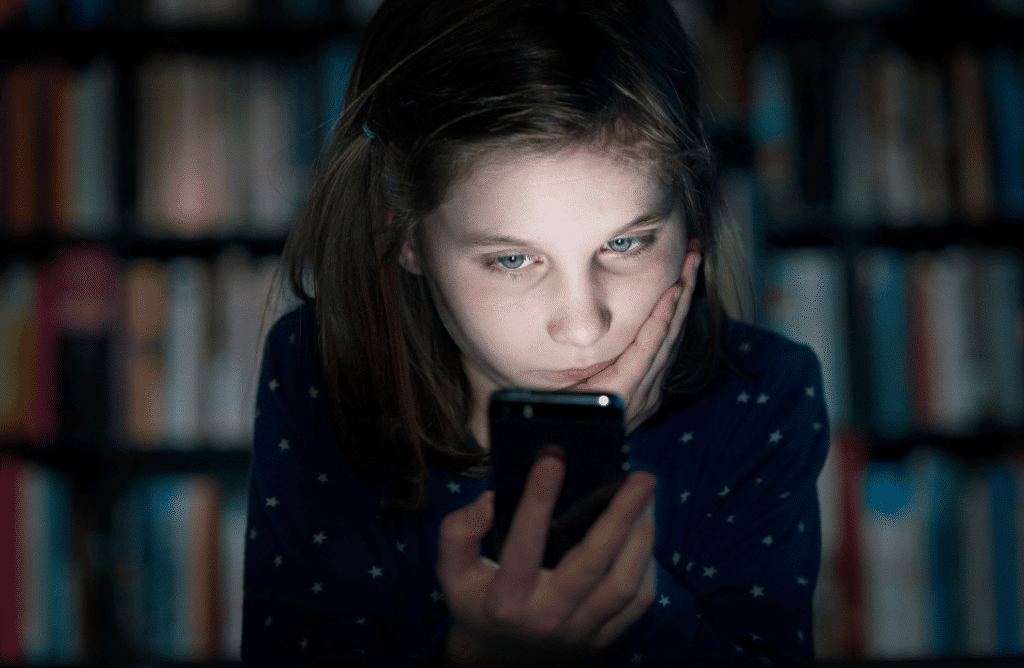The Negative Impacts of Social Media
Discover the negative, far-reaching impacts of social media on youth. Children and adolescents are vulnerable to bullying, stalking, harassment, and many other risks when using social media platforms. Though youth are especially vulnerable, social media users of all ages can fall victim to the negative impacts of social media. A social media addiction lawyer from Cutter Law P.C. can help victims deliver accountability and secure damages for their suffering.
When social media first took over the digital sphere, we eagerly anticipated a world of connection. Public opinion about sites such as Myspace, Facebook, and Twitter were overwhelmingly positive at the beginning. Young users of the era believed that these sites could be a genuine force for good.
A lot has changed in a few short years and, while many young people still spend a great deal of time on social media, they also acknowledge that their favorite platforms can be a minefield. A wealth of research backs this up, suggesting that excessive time on social media is a significant contributor to today’s mental health crises.
Many users are alarmed by their own habits; data from the Pew Research Center suggests that, while over one-third of teens would like to spend less time on social media, well over half believe that it would be somewhat or very hard to give it up.
Parents, meanwhile, feel powerless to keep their kids away from social media. They worry that their children will be targeted by stalkers, scammers, or bullies. The negative impacts of social media on youth go beyond these issues, however, and while they may seem subtle, they can cause significant harm in the long term.
Quick Links
What Are the Biggest Risks of Social Media?
Social media is not all good or bad, but it presents its fair share of risks — especially for vulnerable kids and teenagers. Some of these issues have long kept parents up at night, but others have proven surprising. Examples to watch out for include:

Bullying. While adolescent bullying is far from new, it’s taken on a new and decidedly alarming approach in the social media era. At one time, victims were able to escape their bullies when they returned home from school, but that’s no longer so easy. Bullying now largely takes place online — and when youth spend the vast majority of their time in digital spaces, they may find bullies difficult to avoid.

Sexual harassment. Sexual harassment, a huge concern in the current digital world, occurs when victims receive unwanted communication (such as messages, images, or videos) of a sexual nature. According to the Pew Research Center, 33 percent of women under the age of 35 have been sexually harassed online. Often, this harassment occurs via direct messages or in the comments section.

Data privacy and hacking. Malware, viruses, and data leaks regularly hit headlines, and yet, many users still think that they’re not susceptible. In reality, however, even the most internet-savvy individuals can fall prey to scams. These often begin on social media sites that users trust. Data privacy concerns can also arise legally, as many businesses have adopted sophisticated practices for obtaining and using consumer information.

Body image. While platforms such as TikTok encourage today’s teens to be their authentic selves, comparison is still part and parcel with the social media concept. As such, the impact of body image issues on mental health is among the most worrisome of the many negative impacts of social media. Most users are well aware that others rely on filters and posing to achieve a specific aesthetic, and yet, they still find themselves insecure about their appearance. People who already struggle with body image issues are at an increased risk for developing eating disorders.

Sleep. Social media sites are designed to be as addictive as possible. This makes it difficult for users to put down their phones and get to sleep at night. Evening exposure to smartphones’ blue light messes with melatonin and the timing of the circadian clock. This can have huge implications for long-term physical health and mental well-being.
Who Is Most at Risk?
Nobody is completely safe from the risks referenced above. No matter their age, education level, or internet savviness, all users can fall prey to social media’s hazards, even when they know where and why these issues exist. Still, certain populations tend to be more vulnerable. Examples include:
- Preteens. These days, most preteens own smartphones and maintain a social media presence. While their parents may be capable of monitoring them to some extent, many still suffer risks that would have been unthinkable a few short years ago.
- Teens. Gen Z adolescents are digital natives, but that doesn’t mean that their still-forming brains are equipped to handle the complications of social media. What’s more, they are frequently targeted by stalkers or harassers, some of whom may be far older and, unfortunately, far more sinister.
- Young women. Teens and young adults who identify as female are far more likely to suffer sexual harassment online. Stalking is also common, as are threats of physical harm. These risks are especially prominent on social media and dating sites.
- Nonbinary and genderqueer. Gay, lesbian, bisexual, and transgender internet users disproportionally suffer online as well as in the real world. Sadly, research from Pew reveals that approximately seven in ten nonbinary and genderqueer users have dealt with online harassment, as compared to four in ten cisgender users.
- Seniors. Social media can be problematic for users of all ages, but different age groups tend to face different issues. With seniors, the primary risks typically shift from bullying and stalking to online scams. FBI and FTC statistics suggest that cybercrimes against older adults result in over $650 million in losses each year. Many of these scams begin with social media posts designed to entice, and ultimately, harm older users.

Legal Remedies for Users Harmed by Social Media
It’s easy to feel hopeless in the midst of all these social media concerns. As a citizen of the modern digital world, however, you hold far more power than you think. With proper legal support, it’s possible to hold not only cyberbullies and scammers accountable, but also the very tech giants that have upended our lives.
Civil actions such as libel and defamation lawsuits are increasingly common responses to social media concerns. An injunction or protective order could be a viable alternative if the main goal is to stop the perpetrator’s harmful behavior.
Legal remedies can vary dramatically from one situation to the next, so it’s important to work with a skilled attorney who is well-versed in this practice area. The skilled legal team at Cutter Law P.C. can help you determine who is responsible for your suffering and whether you have a viable opportunity to secure damages.
Other Resources for Dealing With Social Media Issues
In addition to taking legal action, you can seek help from a variety of resources. In this way, the internet can be both the problem and the solution — there are still many opportunities for connection and assistance available online. Examples include:
- Social media blocker. If you or your children are struggling to stop the endless cycle of scrolling, you may need outside intervention. A social media blocker limits your time on apps such as Instagram or Facebook or at least makes you more aware of your habits. Favorites include Freedom, RescueTime, and StayFocusd.
- StopBullying.gov. While this government website addresses many forms of bullying, cyberbullying is a clear emphasis. The website provides ample information for parents, kids, and educators, including details on federal laws about discriminatory harassment. StopBullying also has a YouTube channel with short, helpful videos for victims, perpetrators, and bystanders.
- PEN America Field Manual. Designed for those experiencing online harassment or acting as allies, this detailed resource provides actionable strategies that targeted individuals can use to protect themselves. While this resource mainly addresses harassment faced by writers, artists, and activists (especially those “who identify as women, BIPOC, and/or LGBTQIA+”), it’s a valuable read for anyone who is concerned about online harassment.
Cutter Law P.C. is Your Social Media Litigation Resource
If you’re concerned about the cyber threats outlined above, you’re certainly not alone. Remember: you have the power to fight back.
The social media harm attorneys Cutter Law P.C. can provide the insight and guidance you need. Contact us today to get started with a no-obligation consultation.

Schedule A Free Case Review
"*" indicates required fields
Our Office Locations
Sacramento Office
401 Watt Avenue Suite 100
Sacramento, CA 95864
Phone: 916-290-9400
Oakland Office
Cutter Law P.C.
1901 Harrison Street Suite 910
Oakland, CA 94612


